page 22
Progressive Thinkers as of 5/8/2020
|
| ||||||||||||||||||||||||||||||||||||||||||||||||||||||||||||||||||||||||||||||||||||||||||||||||||||||||||||||||||||||||||||||||||||||||||||||||||||||
For those who either by hook, by crook or some adventurous look chance upon this page... let them be aware that I am interested in the "threes phenomena" occurring in multiple subjects. The threes phenomena is a repetition of a pattern-of-three such as for example we can observe most people using three fingers (two fingers and 1 thumb) to hold a pen or pencil. This activity is a standard, and may in fact be a world-wide standard most of us take for granted. Another example is the line, box and X in the upper right hand corner of a computer screen. This too is standard. It is also standard to see people with eyes that have a pupil, iris, and cornea. In fact, if we look closely at human anatomy we find that patterns-of-three occur with remarkable frequency, as note by Dr. McNulty in his List of Threes in Anatomy.
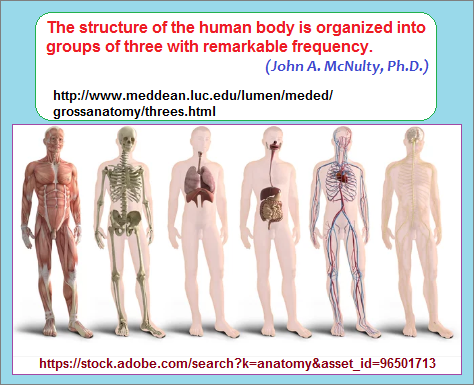
If we then turn to a subject such as Physics as Mark Mahin has done, a regular occasion of "threes" is evident: Nature Seems to Love the Number Three.
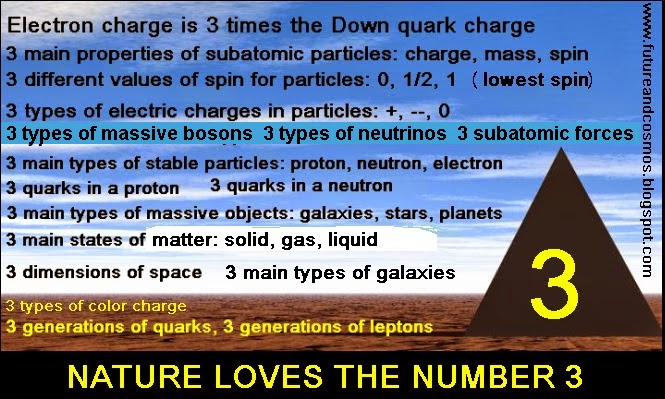
If we turn to the subject of Philosophy with a particular focus on Logic, we find there are three fundamental laws as discussed by Yolanda Williams:
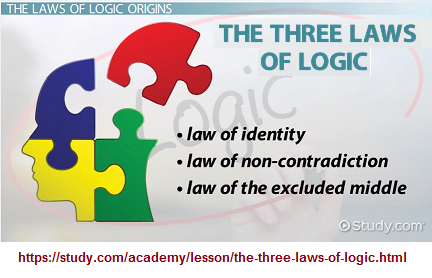
There are other examples from Astronomy such as life existing on the Earth, 3rd planet from the Sun and from genetics we find a basic constituent of life known as DNA having a triplet code; and from a text book on developmental biology we find that complex life forms such as humans have developed by way of a sequence of Three Germ Layers labeled the Ectoderm- Mesoderm- Endoderm, which has been alternatively described by helpful ways to remember them, called a Mnemonic, as described by Trillium Chang (whose first name is highly appropriate for a "threes" discussion):
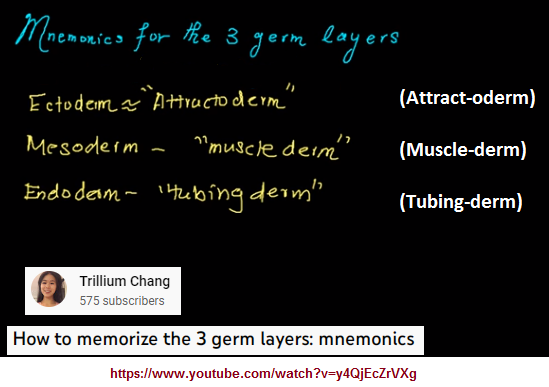
There are multiple other examples of "threes" from diverse subjects which have been collected by many others at different times and places. While some prefer to collect examples from a single subject, others like myself prefer a more eclectic (very broad) approach. This site exhibits an ongoing collective effort. I take examples from multiple sources and make an attempt to provide each and every author with their due credit. I in no way want to pass off their work as my own. Plagiarism is foolish since you would be found out for any deception eventually. However, like many of you I notice that there are other pattern numbers such as 1, 2, 4, 5, 6, 7, 8, 9, etc... Yes, on occasion we will find an absence of a "three pattern" and forced to confront the situation in which some other number re-occurs with a frequency that can not and should not be brushed aside. In an attempt to account for them, one might suggest that all of them constitute some measure of standardness in human thinking, but that some numbers arise with greater frequency in different forms. Whereas we do not always see the symbol "3" or some other numerical symbol, the pattern may show up as a single word such as one, or two, or three, etc... Very often I have found that numerical patterns can occur in multiple shapes, sizes, flavors, etc., depending on a person's language, culture, and interests. But many number patterns appear to be universal, in that most... if not all humans rely upon them just as we do with having a similar physiology and genetics. Indeed, all life is on the 3rd planet from the Sun and not some other numbered planet. While there may be other types of life forms elsewhere in the Universe which do develop on a planet (or whatever) that is not in a 3rd position, we at present do not know of any.
While there are standards of thinking to be found amongst different cultures, different language groups, genders, religious orientation, etc., it is of need to find more basic representations of enumeration which occur in human thinking. For example, all people rely on a period, question mark and exclamation point for ending one sentence (expression) or another. This is a standard cognitive pattern. Again, different cultures may exhibit what can be described as a cognitive (mental activity) standard which is (or may not be) expressed in some manner, be it by an activity of art, craft, music, science, mechanics, cooking, gardening, fishing, etc... Whereas one standard in one culture may be actively used as a commonality such as the idea of the Yin/Yang philosophy which exhibits multiple patterns-of-two sometimes referred to as dualities, dichotomies, opposites, complimentarities, partners, etc.., the use of a visual list may be helpful for those unfamiliar with the idea:
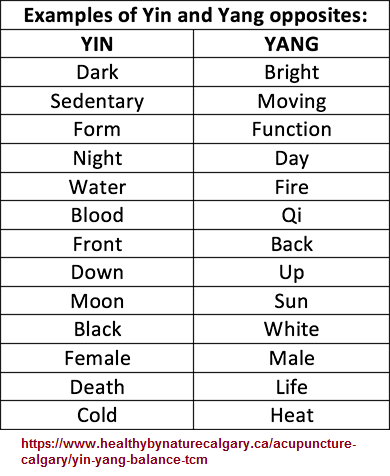
The idea of the yin and yang has been applied to different interests such as foods:

The yin and yang idea has also been applied to management practices which emphasize three core concepts:
- Cycles move from one extreme to the other (night ends as day approaches)
- All things are interconnected and dependent on one another
- Balance is an ongoing process of ebb and flow
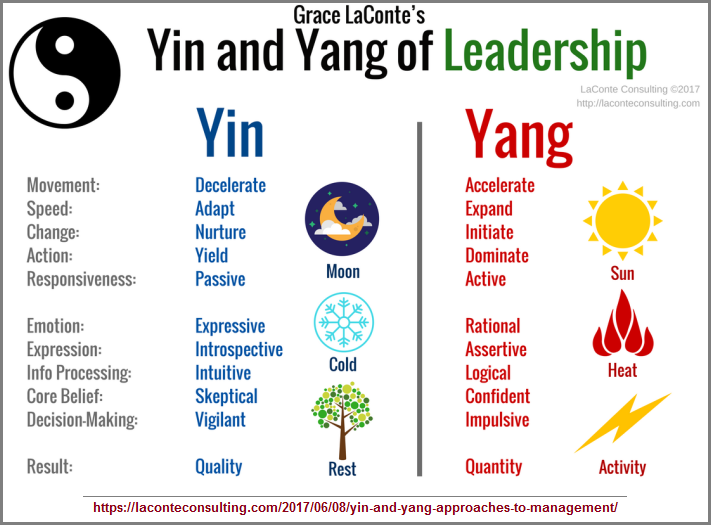
Even though the idea of the Yin and Yang list of paired ideas has been applied to multiple interests, let us not forget that it is a Natural philosophy constructed by humans and is not necessarily a philosophy of Nature. I am inclined to view it more as a symbolic representation of a fundamental pattern construed the human brain by way of a simple form of counting called pairing, initially linked to an observation of differences noted between genders. In other words, it is an enlarged... an embellished philosophy initially developed by what we today may refer to as a sexual or sexuality differentiation. Granted that it may have begun as a simple reference to the acknowledgment of gender differences, but it has come to express a much larger system of counting multiple observations using a counting system of pairing. Instead of making notches on bones, rocks, shells or what have you; the yin and yang philosophy is a series of paired notches that was eventually subjected to an increased model of intellectual activity called the I-Ching, which exhibits an orientation towards patterns-of-three called triads. The notches (words) used on a list of yin yang items is like a rudimentary form of mathematics where one side of the equation is matched to the other side of the equation in some symbolic manner. However, it was not in the East where our present mathematics became further embellished, but in the West. To this end, the dominant pattern-of-two ideas to be found in Mathematics is a Westernized embellishment of the old yin/yang system of pairing... which is a rudimentary form of counting by pairs.
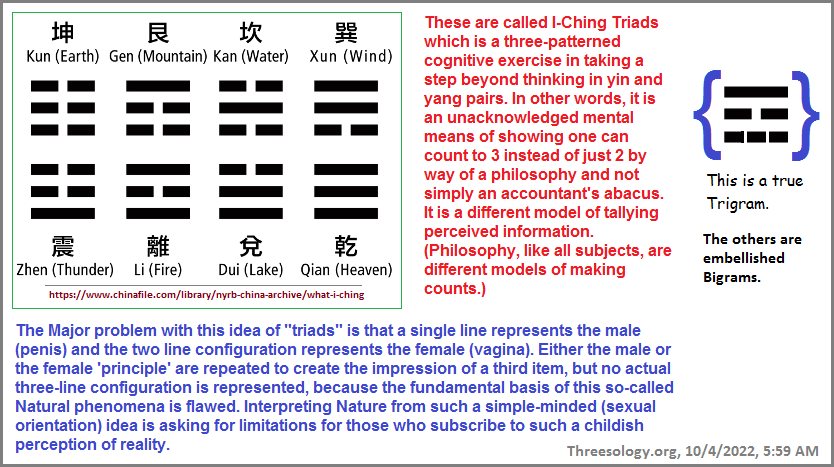
While the idea of I-Ching Triads has been philosophically embellished ("complexified") as described here: Group relations, resilience and the I Ching by Frank Schweitzer, it is of need to point out that it too represents an early form of counting where the idea of a "group of three" was conceptualized as an intellectual step beyond the patterns-of-two seen in the yin/yang philosophy, an actual state of "three" was not achieved... and in fact what we find is an embellished pattern-of-two set into a three-patterned array, which one would expect as an activity in developmental terms, though occasions of exercising a "leap" in human cognition is not unheard of, much like a "punctuated" form of evolution (or equilibrium) taking place (perhaps more commonly known as a mutation which exhibits something extra- than an ordinary capacity or activity). Simply put, the so-called I-Ching triads are not actual pattern-of-three, but attempts to reach such a formula by way of elaborately concealing patterns-of-two set into a configuration whose complexity and attenuations to other considerations helps to camouflage the basic pattern-of-two being clothed in a lacy garment.
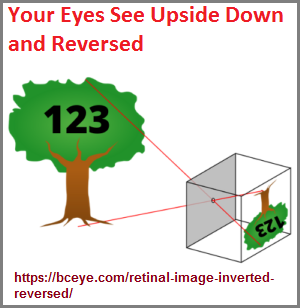
Our present day Mathematics is a Westernized embellishment of a basic pattern-of-two orientation developed in ancient China. Yet, because humans seem only to be able to process large amounts of divergent data by using a simple activity such as pairing, this may account for the adoption of such a pattern to multiple types of observation from which ideas are constructed... because human perception does routinely process in groups of three on a large scale as a practice that is applied to different subjects as a whole, though individual characteristics within a given subject may well have multiple patterns-of-three ideas that are not routinely collected together and assembled into an idea involving human cognitive development and behavior over place and time. Whereas we see patterns-of-three groups in particle physics, we rely on a two-patterned electrical formulation from which has been developed a binary code used for computers. A predominantly two-patterned fashioned system of Mathematics that humanity currently makes use of only serves to focus attentioned ideas in a similar direction, despite attempts to develop a trinary dominant computer system. Humanity has difficulty in thinking outside the two-patterned box in lives in because it is a very deep and wide box with multiple two-patterned tunnels from which arise multiple two-pattern ideas which make perfect sense to a mind whose developmental educational foundation has been impressed upon with a dominant two-patterned orientation in many different guises. One of these is the notion of a "Wavicle" (Wave–particle duality) created by the use of a two-pattern double-slit experiment, particular since the process of seeing rests upon ideas involving a pattern-of-two reversed image notion occurring in the brain's visual field of activity. (Your Eyes See Upside Down and Reversed by Gregory H. Scimeca, M.D., Nov. 11, 2019)
On the one hand we have the record of a double-slit experiment: (Double-slit experiment) and a triple-slit experiment: (Triple-slit experiment confirms reality is quantum by David Shiga, New Scientist (Physics), 22 July 2010.) Both of which are used to confirm other ideas involving quantum mechanics, but a "reverse-engineering" mode of thinking where we start from the experimental side of the equation, may not necessarily yield the ideas used as an influence on the type and manner in which the experiments are carried out. In other words, as indicated in the previous line of thinking concerning the use of a patterns-of-two thinking model whether acknowledged as such or not, if there is a mental inclination which impresses upon a person to use a pairing form of orientation, then the result of a wave/particle duality is easily understood. However, this then implies that such a concept is a rudimentary form of mental counting activity and we are awaiting someone to create the notion of a third participant in this two-part result, even if the expression is at first but an embellishment of the wave/particle duality and is not an actual three-part configuration.
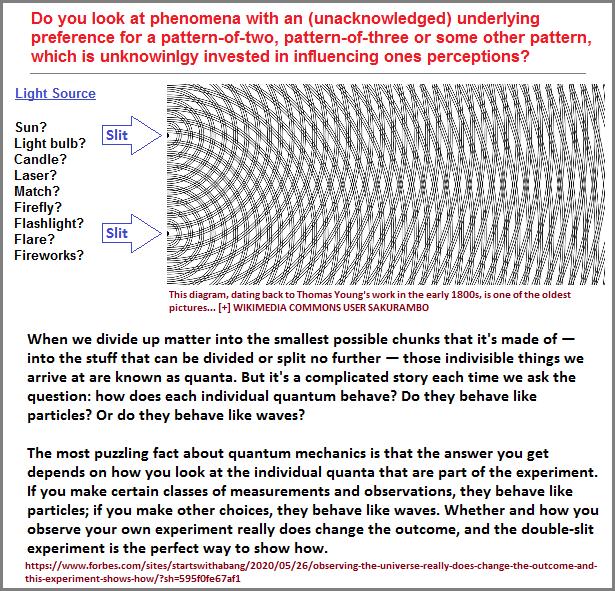
Even though Thomas Young used an overall three-part configuration, the idea of "three" is not at the forefront of conversation. The "two" is in the form of wording indicated as "double"-slit experiment. If the human brain has an underlying "2" count that some people (and institutions like Religion and Politics) become transfixed on and do not allow for a higher count in their consciousness (because such people gravitate to such types of institutions to assert their antiquated ideas?), then social standards may well be an exercise in contentions between those who are predominantly two-patterned oriented and those who are transitioning into a three-patterned consideration.
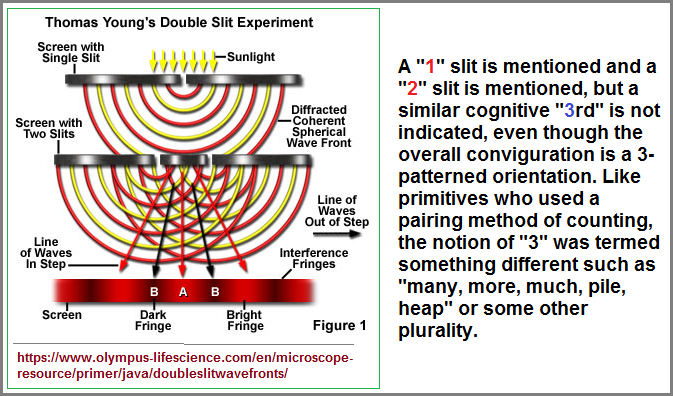
If we look at Thomas Young's experiment as a cognitive exercise of pairing (or a two-patterned mental exercise), let us note that others using their own methodologies in reviewing Young's work, also rely on simple experimentally exercised counts:
The success of Young's experiment was strong testimony in favor of the wave theory, but was not immediately accepted by his peers. The events in place behind phenomena such as the rainbow of colors observed in soap bubbles and Newton's rings (to be discussed below), although explained by this work, were not immediately obvious to those scientists who firmly believed that light propagated as a stream of particles. Other types of experiments were later devised and conducted to demonstrate the wave-like nature of light and interference effects. Most notable are the single mirror experiment of Humphrey Lloyd and the double mirror and bi-prism experiments devised by Augustin Fresnel for polarized light in uniaxial and birefringent crystals. Fresnel concluded that interference between beams of polarized light can only be obtained with beams having the same polarization direction. In effect, polarized light waves having their vibration directions oriented parallel to each other can combine to produce interference, whereas those that are perpendicular do not interfere. (Thomas Young's Double Slit Experiment)
Use of a single mirror or double mirror experiments are exercised models of mentally counting with small numbers, as can be seen in the use of a double-slit experiment, yin/yang compilation of examples, psychology (Persistent Dichotomies), and Mathematics (with such dualities as add/subtract, multiply/divide, real number/imaginary number, two sides of an equation, philosophy (Dualism and Mind by Howard Robinson, Substantive Revision: Fri Sep 11, 2020; The Implicit Duality of Thinking by George P. Conger, Apr. 27, 1922 etc...). When we say that someone is giving an "account" of some subject, indeed they are. They are expressing a model of counting which may contain several "modules" of underlying numerousity such as if they were expressing items in parenthesis. brackets or braces as one might see in an equation, but has foolishly been isolated to thinking that such behavior only occurs in mathematical expressions when it in fact occurs in all types of thinking in different ways:
In math, it is important to separate groups of numbers for many reasons, such as grouping coordinates or writing sets. Depending on the type of mathematical grouping, there is the different notation: (Order of Operations with Brackets, Braces, and Parentheses)
- Parentheses, ( ), are the most common type of grouping notation used in mathematics.
- Brackets, [ ], are a squared version of parentheses.
- Angled brackets, < >, due to their similarity to the greater than and less than symbols, they are only used to designate a set of numbers which is a vector.
- Braces, {}, these are a curly parenthesis.
- Braces and brackets can both be used to separate groups of values for the arithmetic order of operations. The difference between braces and brackets in math is that braces can also be used to indicate a set, or a collection of related values, while brackets can also be used to signify that a group of numbers in an array, or a collection of numbers arranged in rows and columns.
- Parentheses, like brackets, are also used for the order of operations, and if layers of separation are required, they are used to illustrate the first grouping that needs to be evaluated, while brackets imply a secondary grouping of values. The difference between brackets and parentheses in math is that parentheses are also used to denote coordinates, multiplication and whether or not a value is included in interval notation.
One might as well ask a person what type of accounting method their brain uses when we ask them their preferred subject of study, since each subject is one type of an account of given material and associated ideas. While some simple accounting methods of pairing are necessary survival tools such as pairing pain with sticking one's hand in a fire, we must be cognizant of the very real possibility that such a primitive pairing behavior can be held over onto other situations later in life which act as obstacles from thinking outside conventional boxes of two-patterned orientation. Yet, if your mentality sees the value 2 (in whatever form and formula your vocabulary is inclined to use) as being foremost and anything beyond the "two" (duality, dichotomy, etc...) is a redundancy, superfluidity, more-of-the-same, etc., then the realization of an actual third may not be part of your consciousness, and you make due with what mental accounting method is most comfortable. If you don't know of the value 3, for example, then trying to explain that a 2 is not the foremost to be realized may not have any meaning for you. You will continue to use the same crude two-patterned toolage you have always done and use to interact with others who share in this accounting methodology, whereby conflicts with those who can count higher (in a conceptual and not strictly a numerical sense) will counting because you may never achieve a reality of being on the same page of conceptualization, and prefer to maintain the status quo of yourself and those who think as you do... established as tradition, as law, as belief, as custom, as fashion, or otherwise.
There is at least one thing to be derived from a study of threes (ideas, activities, events, etc., which come in groups or sequences of three) which have led me towards pursuing the notion of a Standard Cognitive Model. Whereas one might initially attempt to secure the view about the consistent repetition of views involving some model of a pattern-of-three, it has allowed me... that is, forced me to take stock of non- patterns-of-three that I have alternatively described as an absence of the "three". I have also come to realize that the "three pattern" is not always viewed by some as being the most prominent characteristic chosen by everyone, though its presence can not be doubted. If you are asked to select your most favorite number amongst a list of numbers from zero to nine (0- 9), the one chosen may in fact be the pattern you prefer to see in all, most or many types of information. You may knowingly or unknowingly selectively orient yourself towards a given numerical preference even if the number symbol is not used. The structure of letters, words, a sentence, a paragraph or enclosed information may be aligned with a preferential numerical value, much like someone who arranges a bathroom set of towels on a rack in a small, medium, large sizing sequence.
(Second half of this page moved to page 21)
Date of (series) Origination: Saturday, 14th March 2020... 6:11 AM
Date of Initial Posting (this page): 1st March 2022... 6:04 AM
Updated Posting:Wednesday, 5th October 2022... 6:01 AM, MST; Albuquerque, NM.